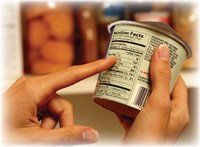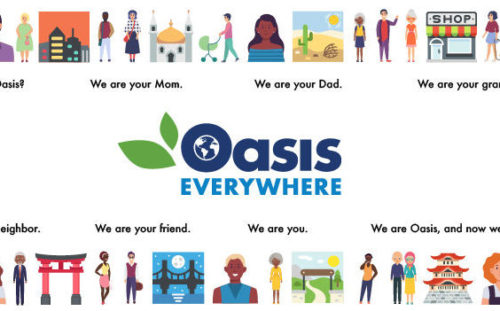A balanced diet is important for everyone, but it’s so easy to get lost at the supermarket in the wonderful world of convenient TV dinners, sodas, chips and other unhealthy foods. With some simple adjustments, however, trips to the grocery store can become healthier. National Nutrition Month is a great time to try these tips.
 An easy way to shop healthier is to stay on the outskirts of the store. That means shopping in the produce, meats and frozen areas. The center part of the store is where many of the boxed and canned foods are kept, where you are more likely to find foods high in sodium, sugar and preservatives. When forced to make a choice, go with fresh instead food in a box or can.
An easy way to shop healthier is to stay on the outskirts of the store. That means shopping in the produce, meats and frozen areas. The center part of the store is where many of the boxed and canned foods are kept, where you are more likely to find foods high in sodium, sugar and preservatives. When forced to make a choice, go with fresh instead food in a box or can.
- Produce is where shoppers should spend more of their time. Stock up on fruits and vegetables, but avoid starchy vegetables such as potatoes, squash and corn, which have more carbohydrates than other vegetables. Non-starchy vegetables should make up half of your plate for lunch and dinner, with the other half divided between protein and any kind of carb you want.
- Protein can come from cheeses or lean meats such as turkey, sirloin and chicken breast. Limit protein to three ounces per meal in order to have enough protein and fat that the body needs.
- Understanding and examining product labels on foods is also critical. Check the serving size on the label to understand how many calories, fat and carbs are in each serving. Some labels only show details for a serving that may be smaller than what is normally used. A mistake like this can result in consuming more calories than you want or need.
- For people on diabetes medication, portion control is not only part of a healthy diet, but it’s also necessary for the medication to be effective. A carb is a carb is a carb, and whether it comes from fruits, vegetables or soft drinks, there’s a certain amount of carbs needed per meal. Men over the age of 65 should consume 60 grams of carbs per meal while women of the same age range need 45 grams. Consuming too many or too few carbs can disrupt the effects of the diabetes medication.
- Someone on heart medication also needs to pay attention to product labels. High levels of sodium can be found in many canned or boxed foods, including certain chicken and ramen soups and stews. Fruits and vegetables contain low amounts of sodium. The average American consumes two teaspoons — or 4,600 mg — of sodium per day, which is twice the recommended daily allowance. People with heart disease need even less sodium and should only be ingesting 1,500 mg daily. To put that amount of sodium in perspective, one medium pickle contains 500 mg of sodium. Choosing fresh foods instead of processed foods in boxes or cans should help to keep sodium levels low.
- Substituting certain ingredients can also improve a diet. Need milk? Buy skim milk instead of whole milk. For cooking purposes, pick canola or olive oil instead of butter or margarine.
Healthy diets don’t need radical changes to be effective. Instead, smart shopping, an understanding of what’s in the food you buy and small changes here and there can help a person live a longer and healthier life.

Mary Helen Vasquez, RN, is a clinical educator for WellMed Medical Management and regularly teaches health and wellness classes geared toward seniors and patients with chronic disease states such as diabetes and heart disease. She is a Certified Diabetes Educator.






Leave A Comment
You must be logged in to post a comment.